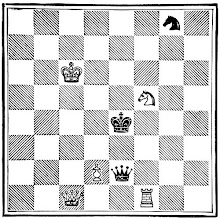EUROPEAN HERITAGE PARADE IN MONTREAL
Tuesday, September 2, 2008

July 4, 2007
Proclaiming our roots: Notre culture-notre langue
People like parades. They provide joy, amusement and colour to young and old alike. Some parades are more interesting than others. Some parades get worldwide recognition or on the contrary, remain of local fame. When attending a parade, it is expected to see the colour of the place and its culture. One does not go to China to see some Halloween outfits during their New Year festival, but to see their famous dragon dance. And, vice versa, Chinese tourists in the west are not ecstatic to see a dragon during our Santa Claus/Father Christmas parade. It makes sense.
The St. Jean Baptiste parade is one of the most loved in Quebec. It is connected with the roots of its people, with its history, language, feelings and hopes. This parade is not a simple parade, but an occasion to parade a sense of identity, of belonging to a culture. In the heart of the multiculturalism, Montreal gives the whole world the image of a cosmopolitan city, with no specific distinction. The 2006 St. Jean Baptiste parade made place for almost every possible culture, but lost the significance of the day. This year’s edition got its vengeance. It simply put the foot in the door without fearing proclaiming its roots and linguistic heritage. The marching characters, in the shape of giant dolls, gave the viewer a very strong sense of cultural identity: watching this parade, you sense the feeling of living in a European environment. Whether some like it or not, the truth proclaimed in the streets during the St.Jean Baptiste parade in Montreal is that those who had created this country are the French , the English and the Irish. They built it; they died working the land, discovering and making roads, farming and harvesting. They built schools and factories, they survived or died in the heart of the six months winter. Some of the new arrivals like to place themselves on the same historical ladder with the French and the English, saying that “We are all immigrants”. Well, yes, we are, only that there is a 400 years gap between.
Les Geants de la Fete nationale
Giant dolls are a European tradition and France has plenty of events where these characters take the leading role. On St. Jean Baptiste, June 24th, Le Journal de Montreal published a list of the most popular surnames in Quebec, and Montreal served a shocking reality: it is not Tremblay, but Nguyen. Well, people reading the article put on faces, sighed, raised their eyebrows and re-read the large print. The typed letters were there, black on white. Sick and tired of multicultural parades (see the Parade du Noel 2006 in Montreal, where among others, the Chinese came with their dragon) I was hoping and expecting that the 2007 St. Jean Baptiste parade in Montreal would be different. And it was. Probably as a result of the “accomodement raisonnable” issue, the organizers came with the idea of having the courage to show our roots. This year’s parade brought some of us back in time and gave others a history lesson: the roots of the French who came here, the English and the aboriginals who were already here. The parade projected a short glimpse of history, with the first arrivals, Champlain, Marguerite Bourgeoys and les Filles du Roi, the first peasants of this land. Marguerite Bourgeoys, one of the giant dolls, left Troyes in February 1653 and she arrived in Montreal nine months later, on the 16th of November. She is considered co-foundress of Montreal, with the nurse, Jeanne Mance, and the master designer, Monsieur de Maisonneuve. Five huge figures, each nearly six meters high, in the European tradition, marched in front of the public. Among those being recognized were Samuel de Champlain, the founder of Quebec City, and Ludger Duvernay, a journalist of the 1800s who founded the Association St. Jean Baptiste, now known as the Societe St. Jean Baptiste, in 1834. The Union des producteurs agricoles, Quebec’s farmers federation, sponsored a third figure, based on fictional character Marie Moisson, the nourishing mother; The fourth giant was a fictional woman, this one paying homage to the aboriginal people of Quebec. The surprise came when the most recognizable giant doll appeared: Rene Levesque, the founder of the Parti Quebecois political party. The dolls were made by the Au Pays des Geants company, with a 25 year old experience in this field. Jean Dorion (president of the Fete nationale in Montreal committee and president of the Saint-Jean-Baptiste de Montreal organization) has promised a special parade. And he kept his word. Proclaiming our roots and bringing into public attention our culture and our language could be seen as brave in a present where any heritage pride shown by the majority, i. e. the host society, is labeled as “nationalism”, thus “anti-multiculturalism”, “anti-”, “anti-”.
It was refreshing to see such a parade where one can easily trace back our past. And one can easily recognize and enjoy the imagery of a common cultural heritage. It was refreshing to see something European when every event tends to overwhelmingly show the visible minorities’ cultural background, while ignoring our own.
Labels: european, heritage, madi lussier, montreal, parade, quebec
